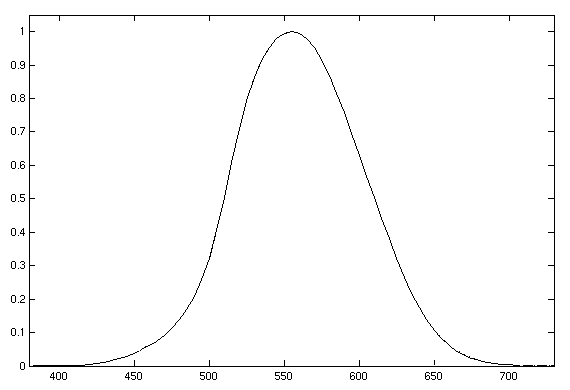

Lux is a measure of the intensity of illumination: how brightly an object is lit.
Think of a book you are reading. If the page is not lit up brightly enough, you can move it closer to the light. So the illumination depends on the distance from the light.
You can also get a brighter light bulb. That too will increase the illumination.
But note that it is not enough to know how bright the light is. I can tell you I've got a 100 watt light bulb, but you still don't know if you can read your book, because my light bulb might be 100 feet away, and your book wouldn't get very much light. So you also need to know the distance.
For light therapy, it's your eyes that need to get the illumination, not the book. But it's the same situation: you need to know not only that the light source is bright enough, but also that your eyes are close enough to the light. And the light must fall on your eyes (though you do not need to look directly at it).
Lights for therapy should indicate that they provide a certain level of illumination (lux) at a certain distance. And of course you must use it at that distance from your eyes, to get that light level. For example they may say a light is 10,000 lux at 24 inches. If they don't specify a distance, that lux number is meaningless.
If your book receives about 75 lux you can probably read it comfortably. But to shift your sleep schedule with half an hour of white light, you really want 10,000 lux falling on your eyes. That's really bright! And to get that much light you may have to sit closer to the light box than you think. Check the manufacturer's recommended distance, and follow it.
A light source, for example a light bulb, is rated in lumens. This is the total amount of light it puts out. But how much falls on the page you're reading (or on your eyes, in the case of a light box) also depends on how far away you are.
In simplest approximation, light spreads out according to an inverse square law. If you are twice as far away, the illumination (on your book, or your eyes) is only one-fourth as great.
The illumination (lux) can be related to the total light output (lumens). If the light source radiates uniformly in all directions,
Of course, light boxes do not radiate uniformly, and at very close distances do not follow an inverse square law. So we're really dependent on the manufacturers to tell us what the illumination is at some recommended distance.
 Luminosity Function
Luminosity FunctionVarious wavelengths are perceived as different colors. The colors as a function of wavelength are shown below. The wavelengths more or less line up with the Luminosity Function graph above. You can see that the luminosity graph is higher where the colors in the spectrum look brighter.
 Visible Color Spectrum - wavelength in nanometers (nm)
Visible Color Spectrum - wavelength in nanometers (nm)
On the other hand, the circadian system responds most strongly to ipRGC cells (intrinsically photosensitive retinal ganglion cells) in the retina, which are not part of visual perception at all. The visual perception system uses other cells in the retina called rods and cones. So the sensitivity of the circadian system is unrelated to the Luminosity Function used in determining lux, which is based only on the visual perception cells.
In fact, the ipRGC cells are most sensitive to blue light around 470 nm. At this wavelength, the luminosity function is just 0.09. You can see this in the spectrum above: the blue around 470 nm seems much less bright than the yellow-green at 550 nm. As a result, the blue portion of light box output, which is the most important for resetting circadian rhythm, doesn't contribute much to the lux measurement of a white light box. And for a blue light box you wouldn't need as many lux.
You may recall learning in school that all visible colors are made up of red, green, and blue. But that's not really true, since there are lots of different wavelengths (see spectrum chart above). What is true is that you have three kinds of color receptors in your eye, with peak sensitivity to red, green, and blue wavelengths, respectively. When a wavelength that's not exactly one of these three primary colors enters your eye, it stimulates several of these receptors. So light at 580 nm (see chart above) stimulates the red and green receptors roughly equally, and our brains perceive that as yellow. It follows that if I shine equal parts of red light and green light, that too stimulates red and green receptors equally, and looks yellow. That's how your TV or computer screen appears to display the whole spectrum of colors with only three types of phosphors (red, green and blue). So in the external world each wavelength of light is a slightly different color, but the eye translates that into just three signals (red, green, and blue) that go to your brain, which then interprets color.
Since you asked: 1 watt per square meter of 555 nm yellow-green light equals 683 lux. At other wavelengths, where the eye is less sensitive, 1 watt/m2 of light energy provides fewer lux (it doesn't look as bright).
For example, if you had two lights, one yellow-green 555 nm light and one blue 470 nm light, both illuminating with the same power of 1 watt/m2, the yellow-green one would measure 683 lux, but the blue one would measure only 61 lux - it would look that much less bright - even though it had the same energy.
The SI base photometric unit is the candela (cd), which is the luminous flux per unit solid angle. The exact value has been chosen to approximate the old "standard candle". The lumen (lm) is the unit of luminous flux, or luminous power. It is derived from the candela: a lumen is a candela-steradian. It's easier to understand by saying a candela is a lumen per steradian. Thus a light source which emits 1 candela uniformly in all directions emits 4π lumens (about 12.57 lm).
A lux (lx) is a lumen per square meter. Thus a uniform 1 candela light source at 1 meter distance casts its 4π lumens over 4π square meters, so the resulting illumination is 1 lux. In older parlance, a lux is a meter-candle, the brightness of a standard candle one meter away. Note that a foot-candle is brighter: it is the brightness of a standard candle only one foot away. 1 foot-candle = 10.76 lux.
1 foot-candle = 10.76 lux
Convert foot-candles to lux and vice versa:
By definition, 1 watt of 555 nm yellow-green light equals 683 lumens. 1 watt is fewer lumens at other wavelengths.
So 1 W/m2 of 555 nm yellow-green light equals 683 lux (recall that lux = lumens/m2).
Equivalently, 1 lux of 555 nm yellow-green light equals 1.464 mW/m2. 1 lux is more mW/m2 at other wavelengths.
Convert lux to W/m2 and vice versa (only valid at 555 nm!):
frequency (Hz) = 2.997 * 1017 / wavelength (nm), in air
Convert wavelength (nm) to frequency (Hz) and vice versa: